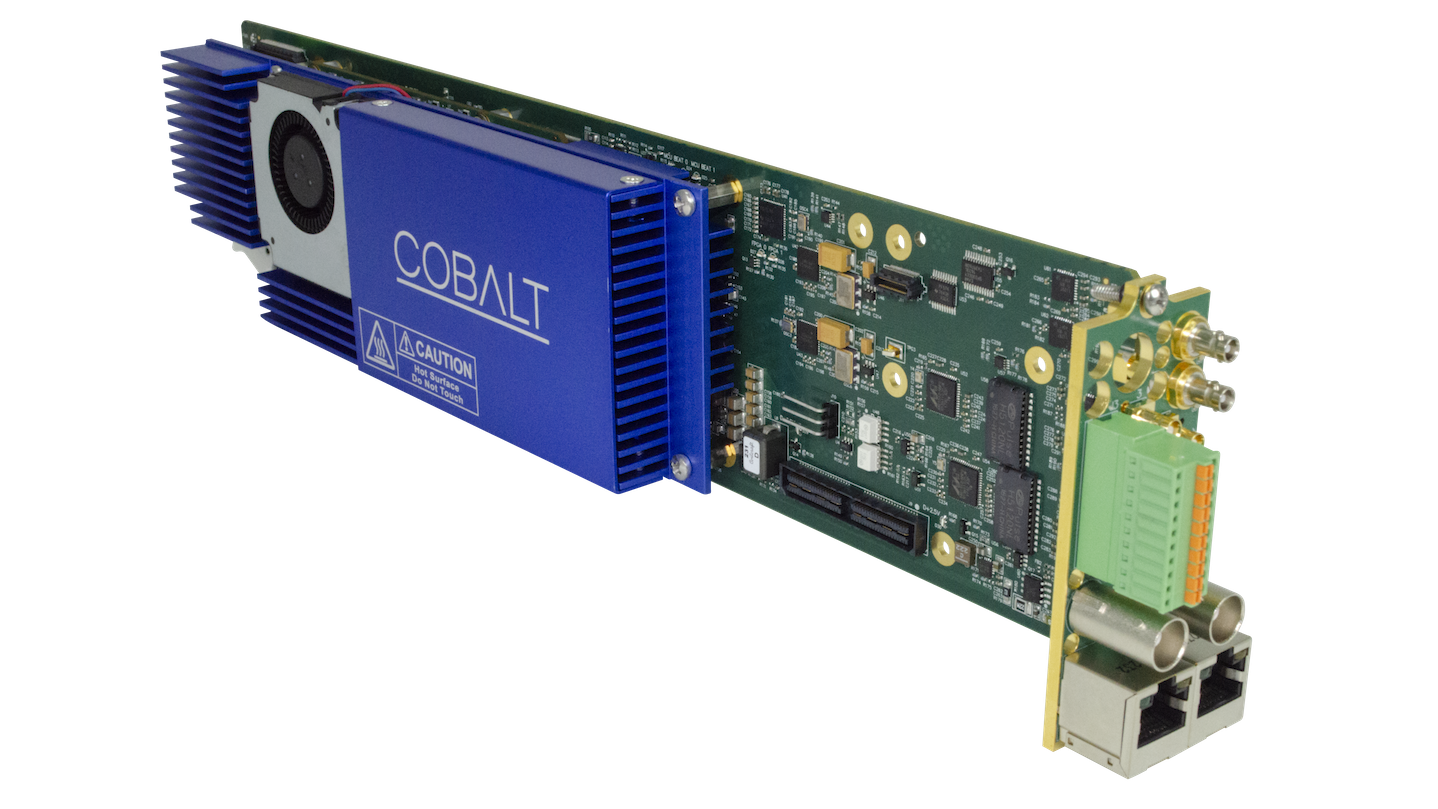
CHAMPAIGN, Ill.—Cobalt announced the release of an ultra-low latency mode for its 9992-ENC software-defined broadcast encoder card series.
The new mode combines parallel processing with GDR (Gradual Decoder Refresh) and a suitable CPB (Coded Picture Buffer) to achieve encoder latencies as low as 10 milliseconds, which makes the device well-suited for broadcast applications, such as sports and news, Cobalt Digital said.
“In any sort of video compression, there is a tradeoff between three variables: latency, quality and bitrate. Essentially, any two of these can be optimized at the expense of the third,” said Cobalt Executive Vice President of engineering Ciro Noronha.
The Cobalt 9992-ENC has always offered users a way to select the desired operating point that best meets their needs. Most relevant to latency are CPB delay and the use of GDR, which before the new mode enabled a range of latencies from as little as 100 milliseconds to more than one second for high-quality at a low bitrate, said Noronha.
The new ultra-low latency mode reduces latency to as little as 10 milliseconds, he added, noting that this latency is lower than the intrinsic latency of the audio encoders typically used. As a result, the 9992-ENC offers LPCM audio support to bypass them.
Cobalt also has released updated firmware for its 9992-DEC with tunable latency. When combined with the 9992-ENC, end-to-end latencies of about 100ms are achievable in HEVC mode, and about 300ms in AVC mode.
More information is available on the company’s website.
The professional video industry's #1 source for news, trends and product and tech information. Sign up below.
Phil Kurz is a contributing editor to TV Tech. He has written about TV and video technology for more than 30 years and served as editor of three leading industry magazines. He earned a Bachelor of Journalism and a Master’s Degree in Journalism from the University of Missouri-Columbia School of Journalism.

